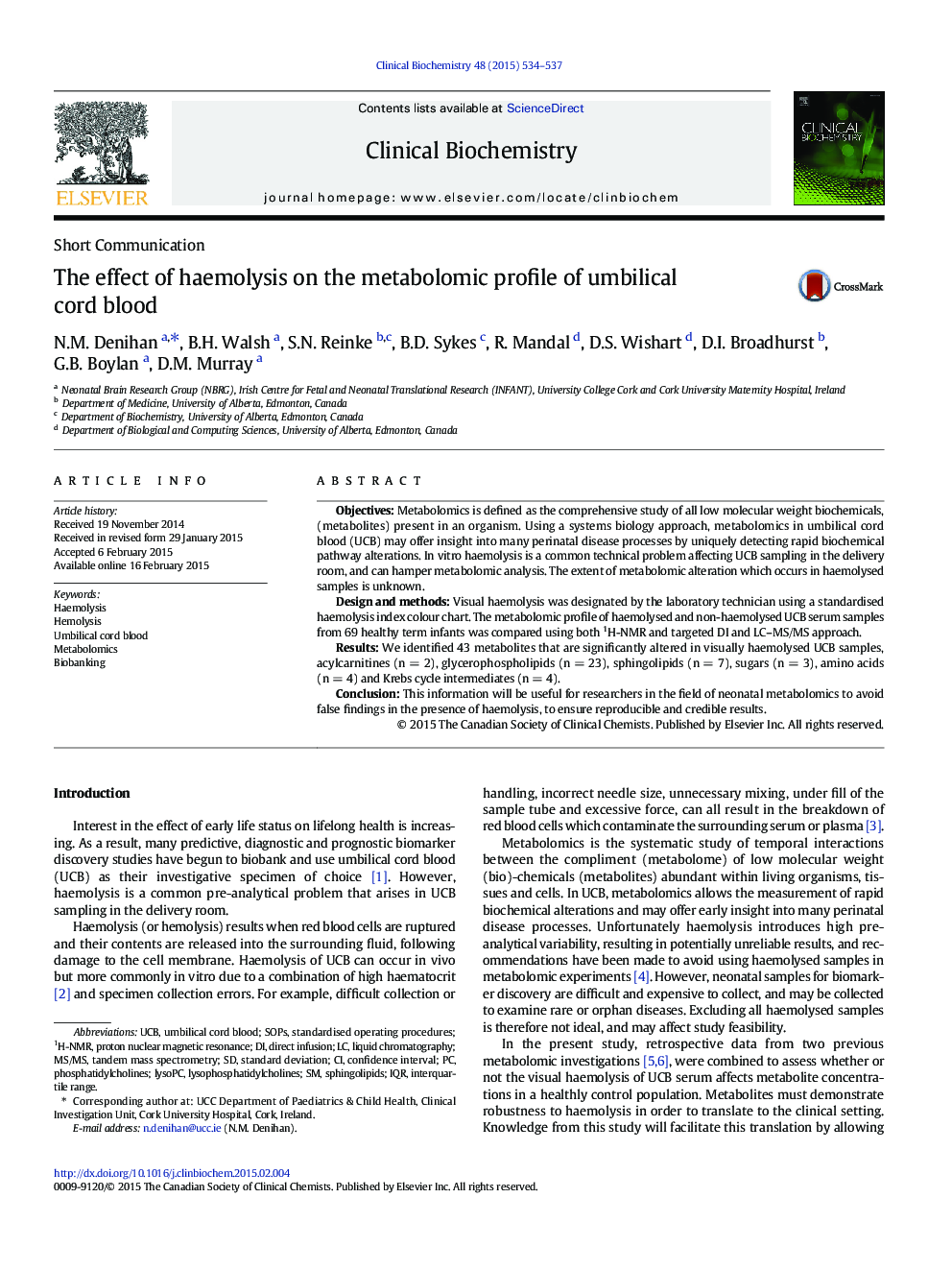| Article ID | Journal | Published Year | Pages | File Type |
|---|---|---|---|---|
| 1968824 | Clinical Biochemistry | 2015 | 4 Pages |
•Metabolite comparison between visually haemolysed and clean umbilical cord blood serum•185 cord blood metabolites quantified by DI and LC–MS/MS, and 1H-NMR spectroscopy•43 metabolites significantly altered, eight with elevated concentrations
ObjectivesMetabolomics is defined as the comprehensive study of all low molecular weight biochemicals, (metabolites) present in an organism. Using a systems biology approach, metabolomics in umbilical cord blood (UCB) may offer insight into many perinatal disease processes by uniquely detecting rapid biochemical pathway alterations. In vitro haemolysis is a common technical problem affecting UCB sampling in the delivery room, and can hamper metabolomic analysis. The extent of metabolomic alteration which occurs in haemolysed samples is unknown.Design and methodsVisual haemolysis was designated by the laboratory technician using a standardised haemolysis index colour chart. The metabolomic profile of haemolysed and non-haemolysed UCB serum samples from 69 healthy term infants was compared using both 1H-NMR and targeted DI and LC–MS/MS approach.ResultsWe identified 43 metabolites that are significantly altered in visually haemolysed UCB samples, acylcarnitines (n = 2), glycerophospholipids (n = 23), sphingolipids (n = 7), sugars (n = 3), amino acids (n = 4) and Krebs cycle intermediates (n = 4).ConclusionThis information will be useful for researchers in the field of neonatal metabolomics to avoid false findings in the presence of haemolysis, to ensure reproducible and credible results.
